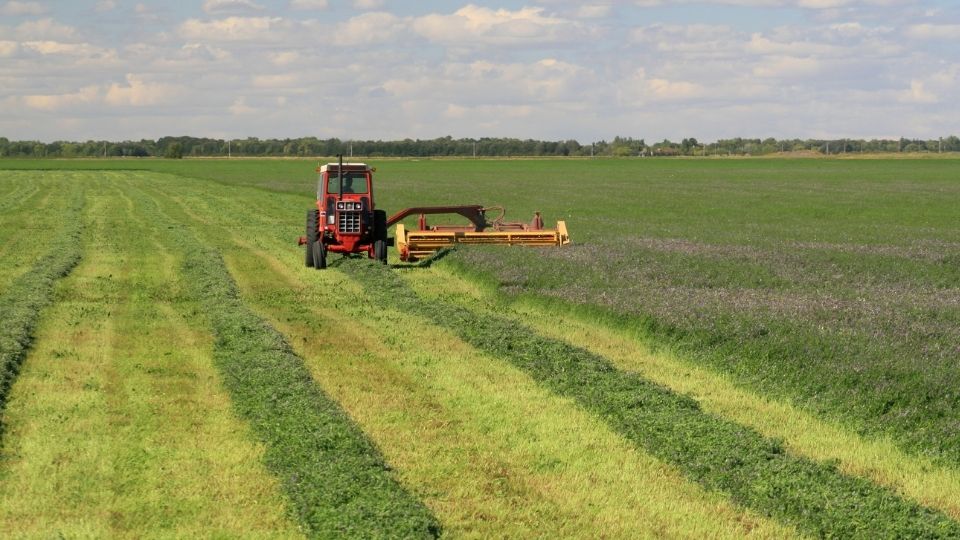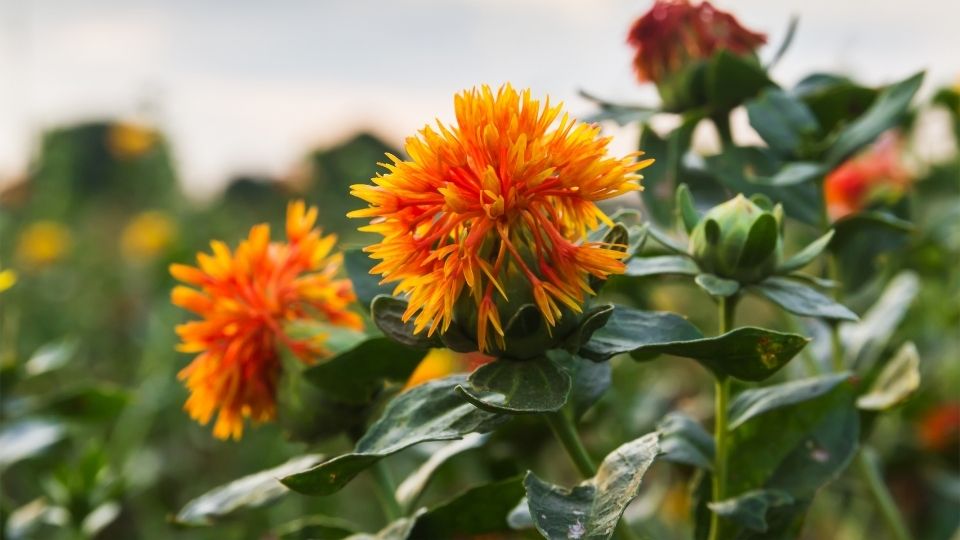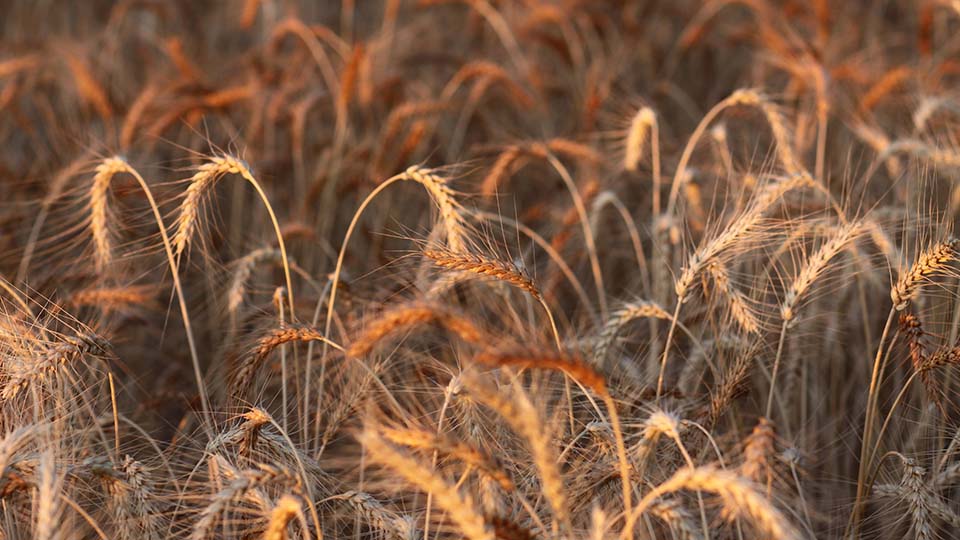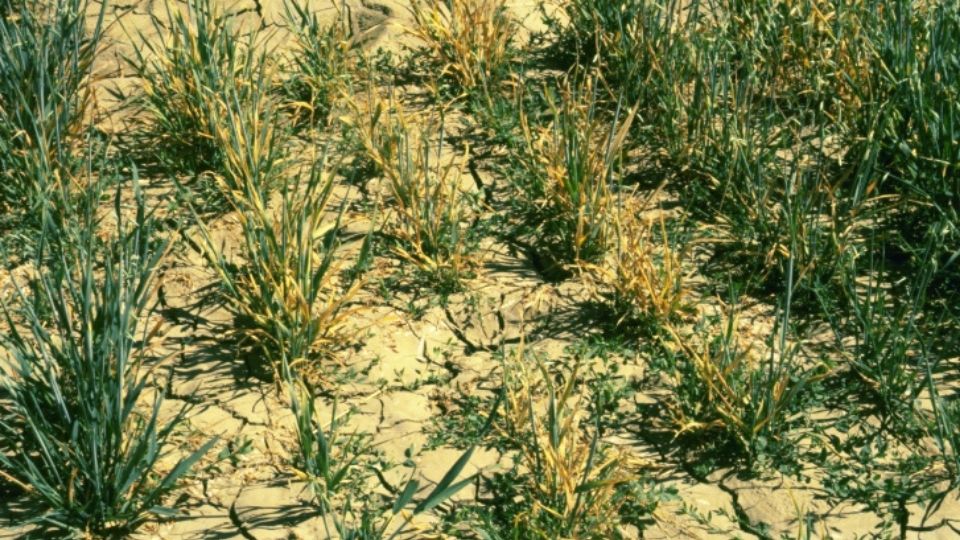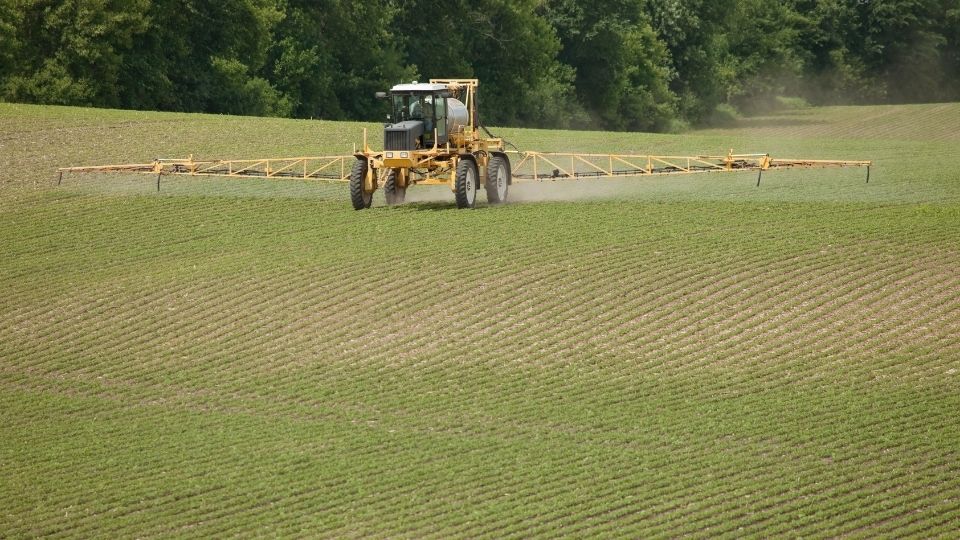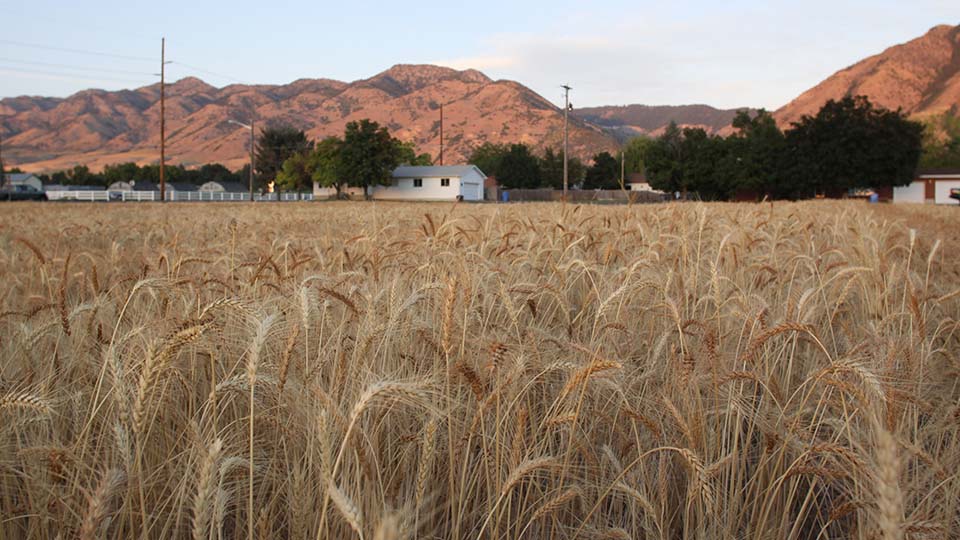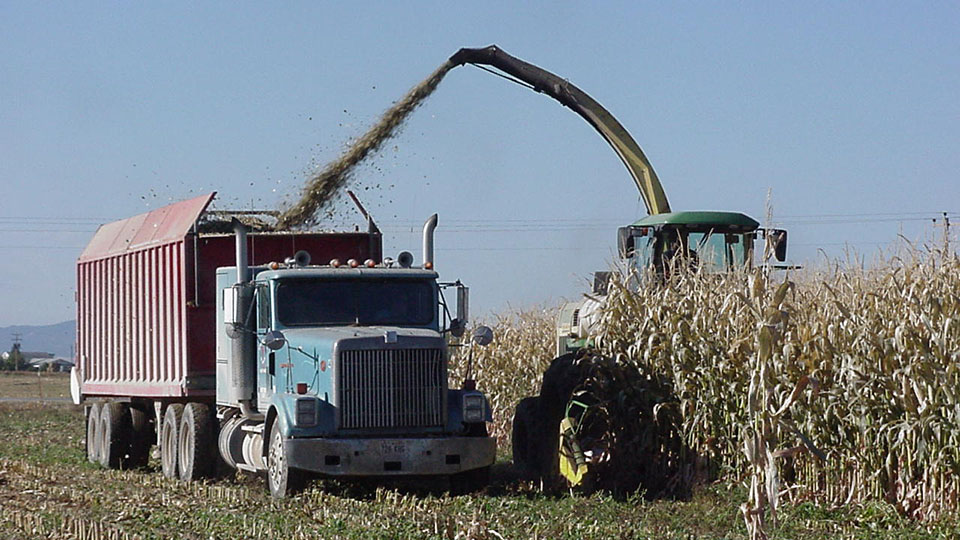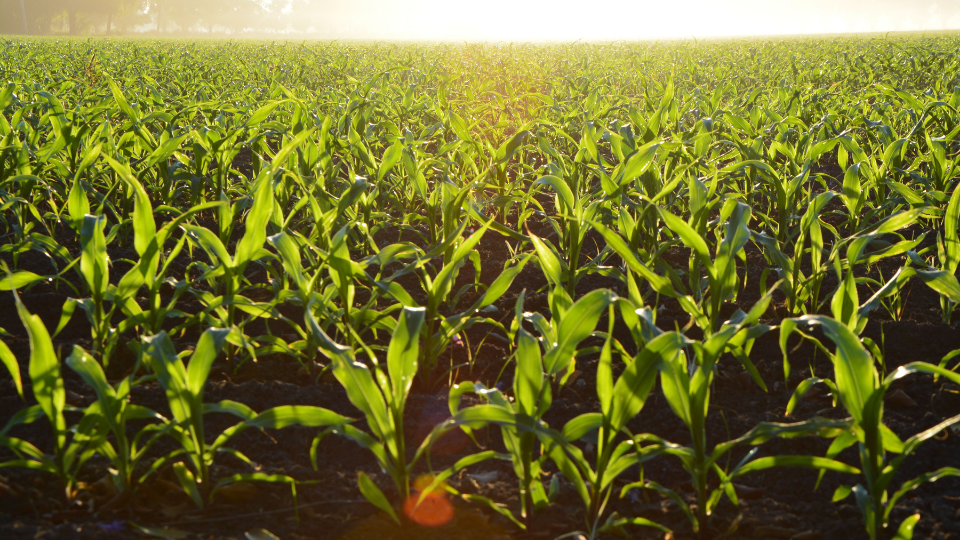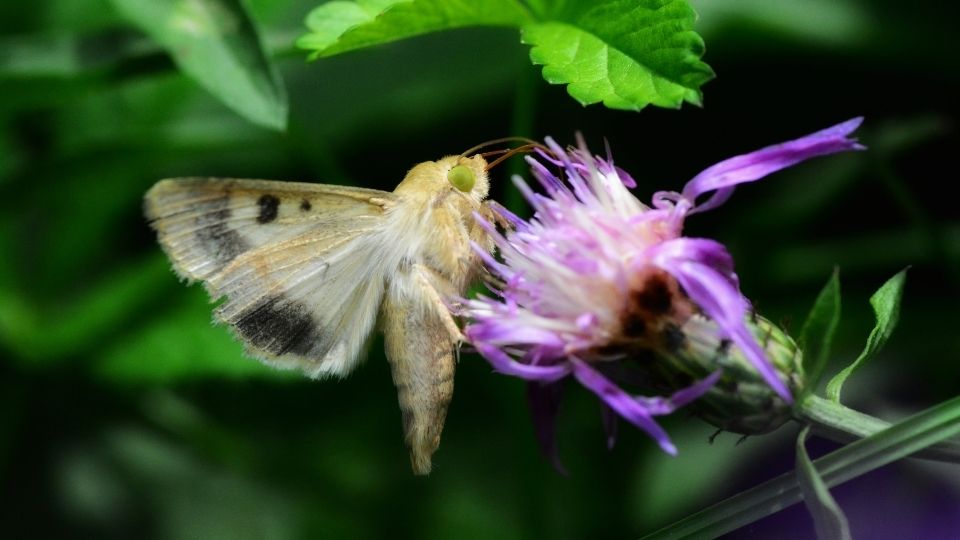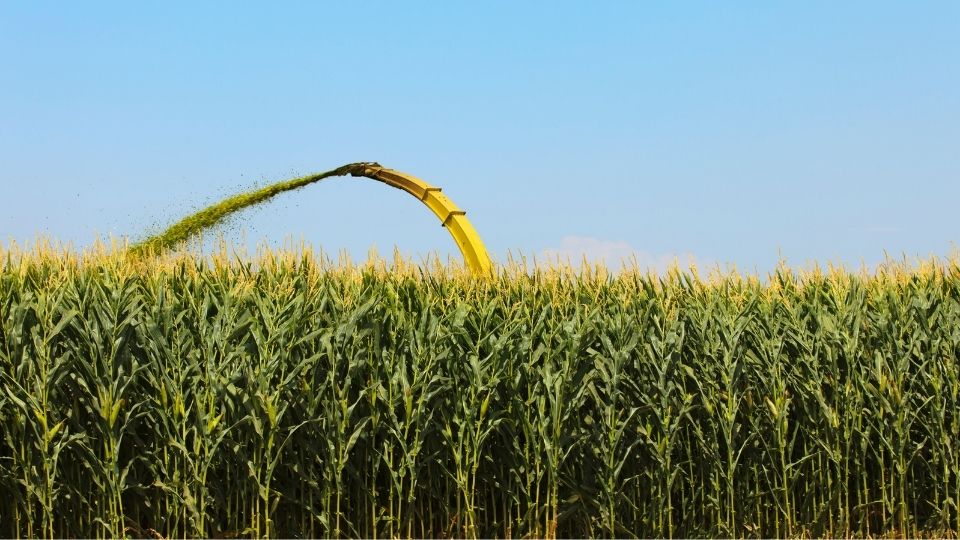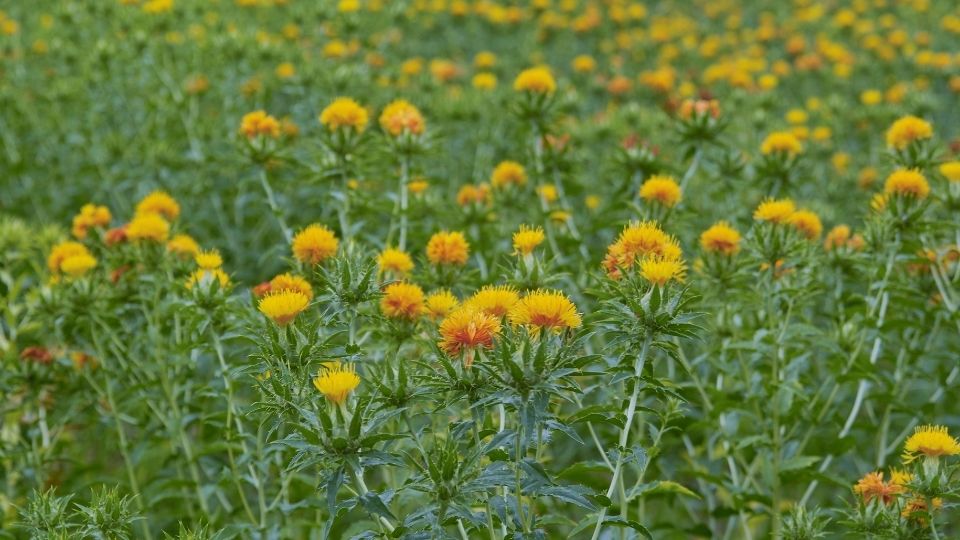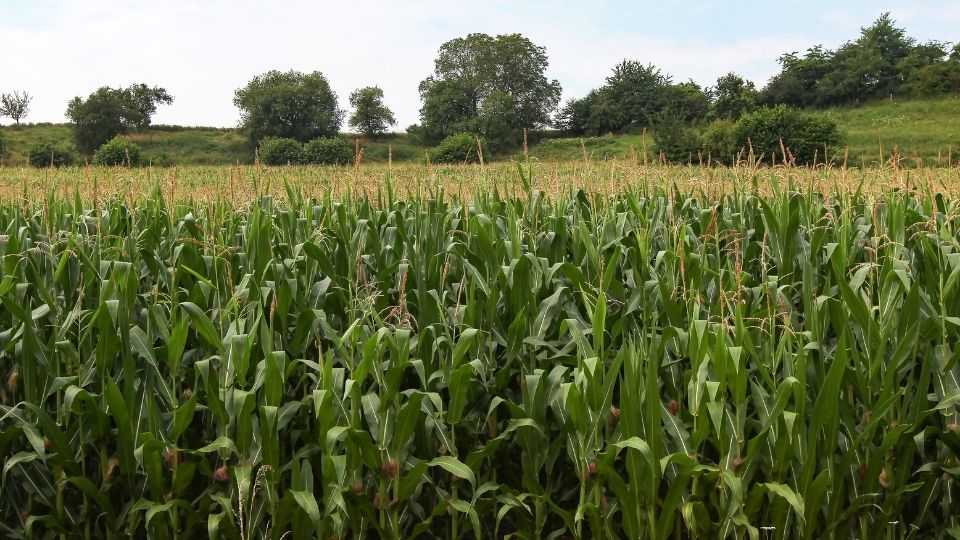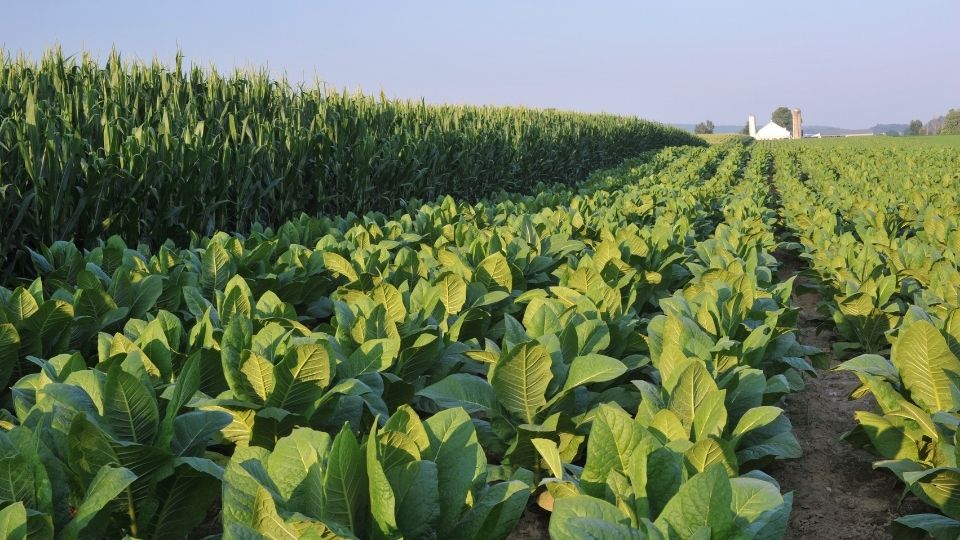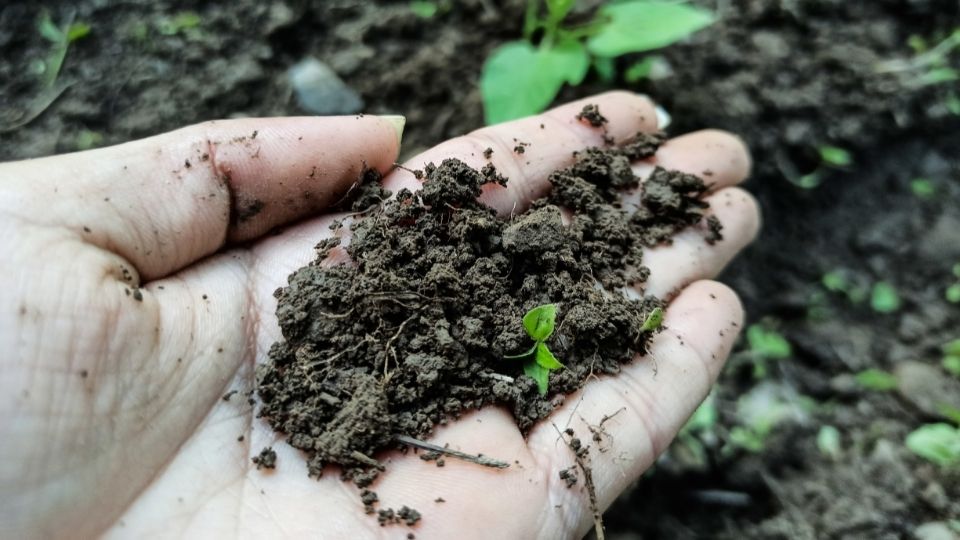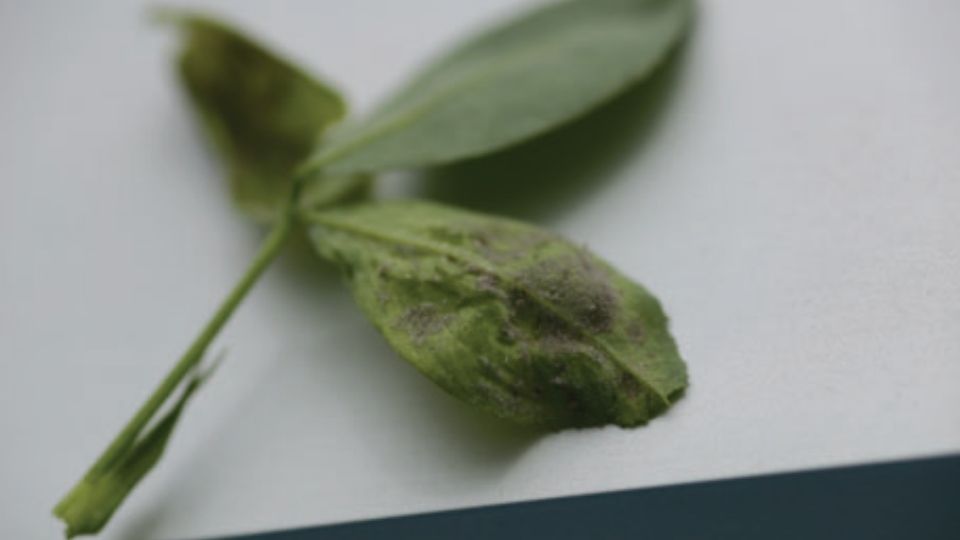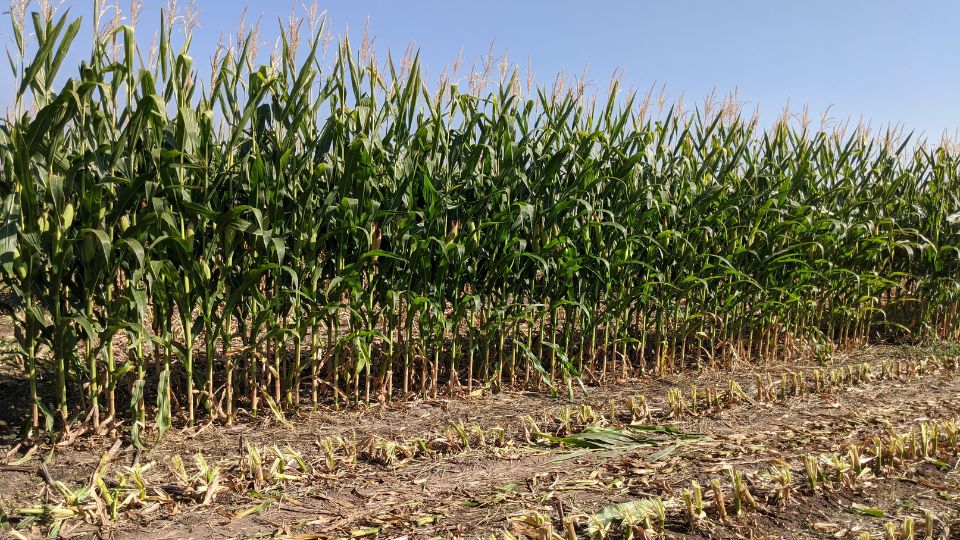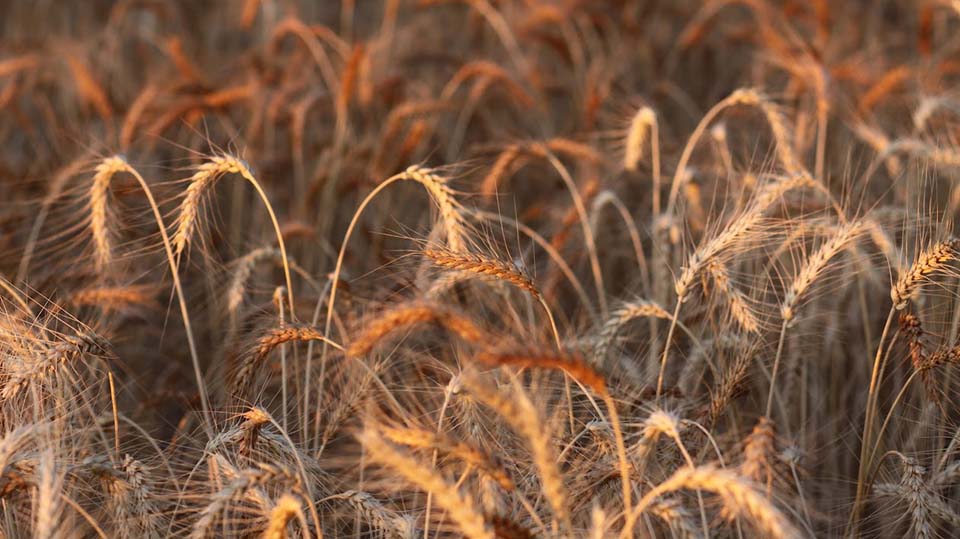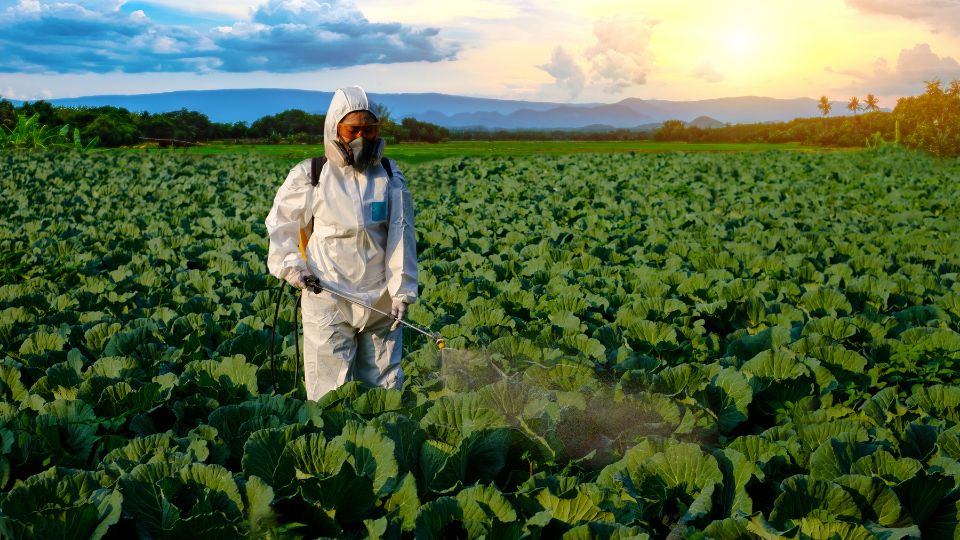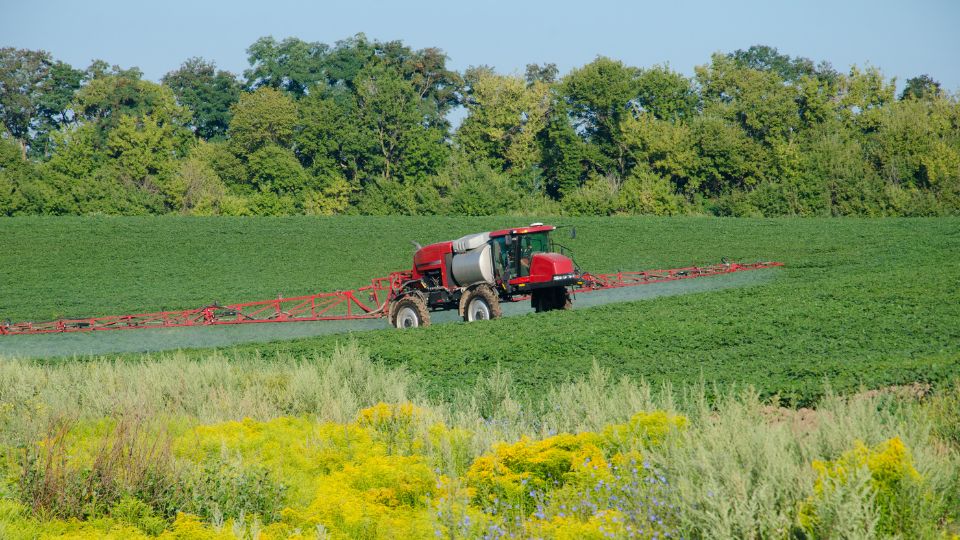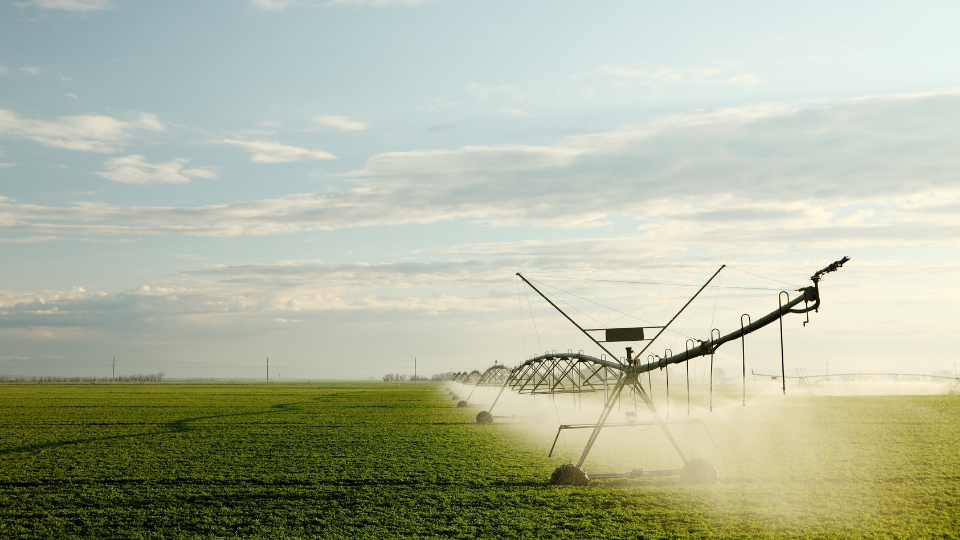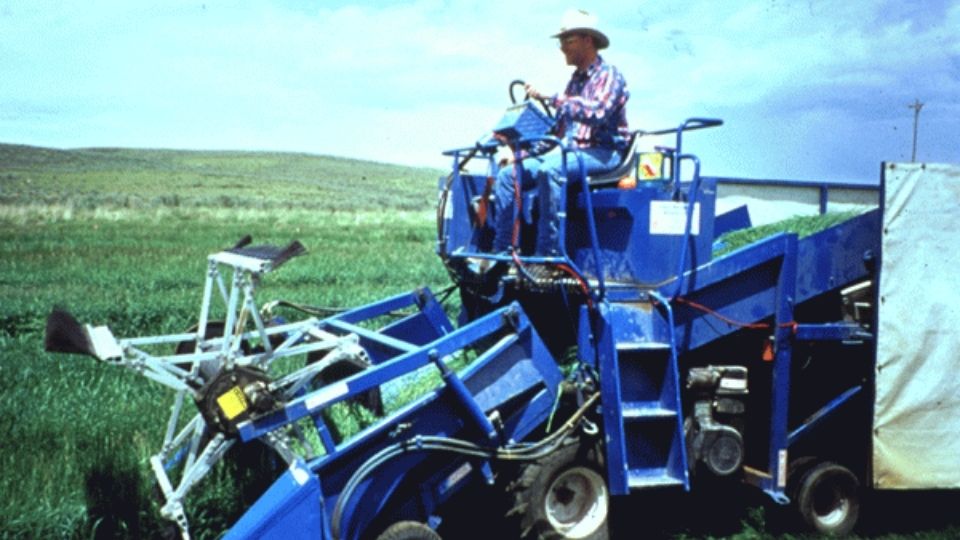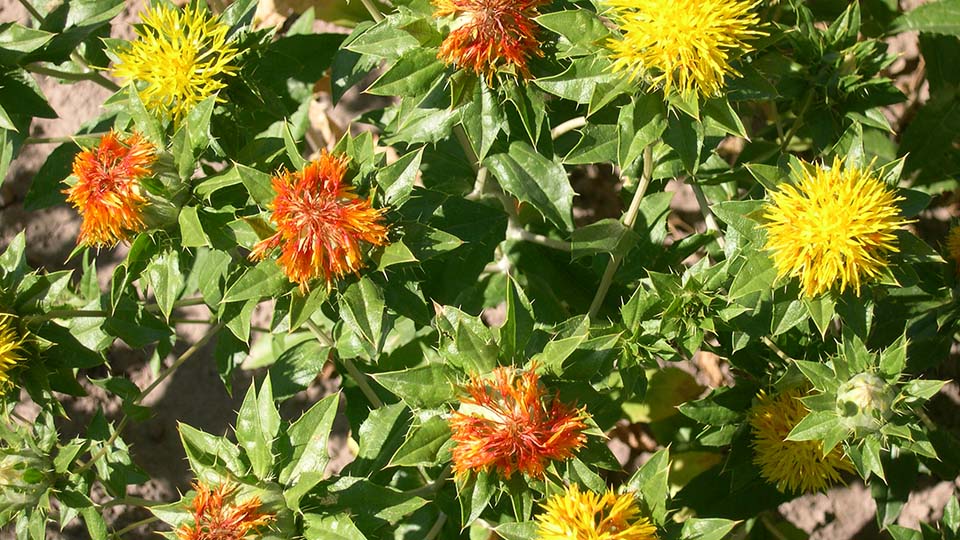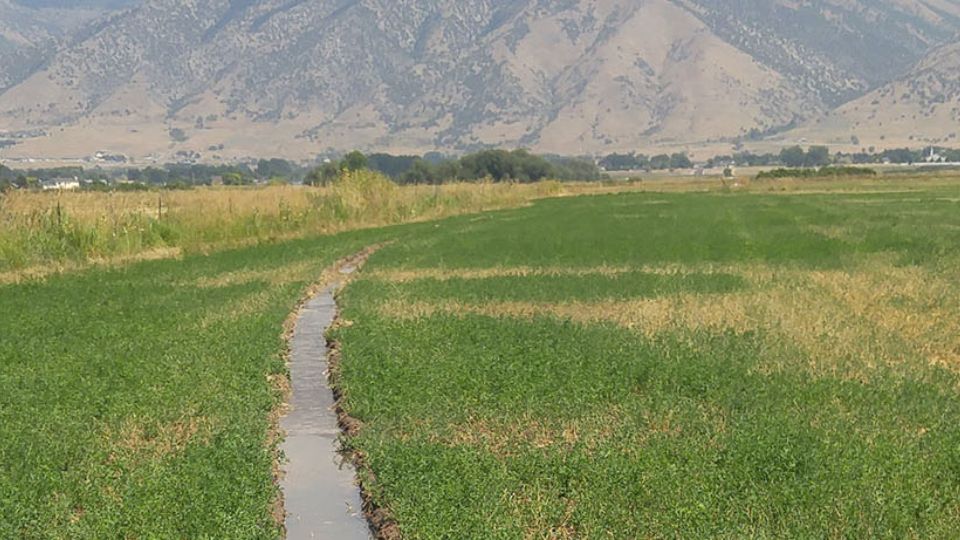Manure Application Through Pressurized Irrigation Systems
Introduction
Manure irrigation is the process of applying liquid manure or lagoon effluent to cropland through an irrigation system. The practice of applying manure through irrigation water has increased as the use of pressurized irrigation systems has increased. Because manure effluent is mainly water it can be applied to fields as a slurry or a liquid after separating the solids. Liquid from manure with a very small percentage of solids can be applied using normal sprinkler systems such as pivots, wheel lines, or other pressurized sprinklers. Slurries require big guns or sprinklers with large nozzles. Slurry pumps may be required depending on the slurry conditions. The decision to utilize manure irrigation requires careful understanding and consideration of numerous factors. This fact sheet will describe advantages and disadvantages, setup, and some basics of best management practices and economics.
Advantages and Disadvantages
Those considering manure irrigation must carefully weigh the advantages and disadvantages. Some of the advantages of manure irrigation compared to land application of manure include:
- Lower Handling Costs. Loading, transporting, and applying manure is a costly exercise. To pursue each of these activities with liquid manure is even more costly because the mixture consists of more water and less nutrient. Applying liquid manure through irrigation systems can be more cost-effective than land application of manure. A pump is used to transport the manure to the field, significantly reducing the costs associated with loading and transportation (Massey & Payne, 2019).
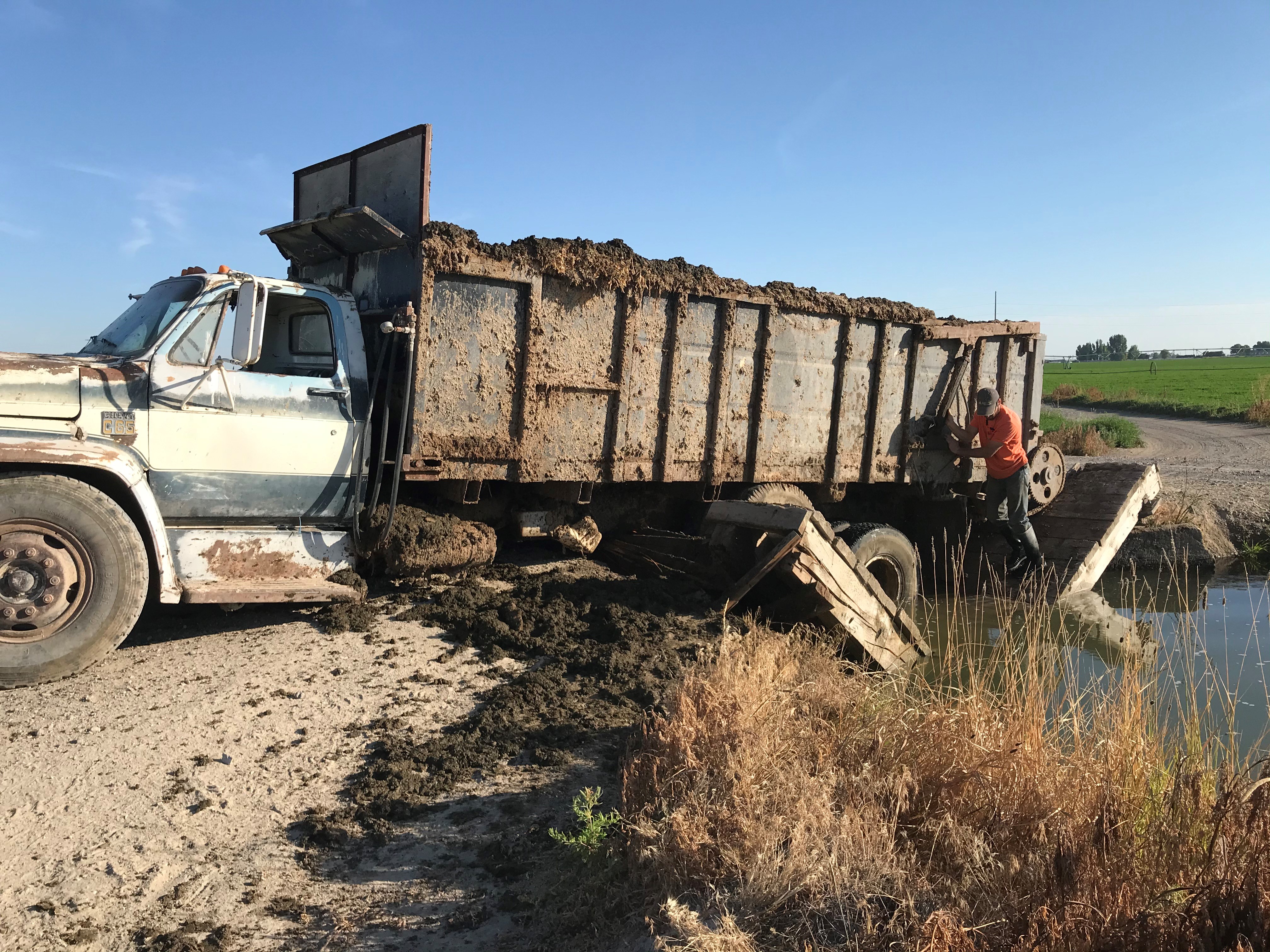
due to heavy load. Photo credit: Matt Yost.
- Reduced Soil Compaction. Applying manure through irrigation systems eliminates the need to drive a large implement across the field, reducing compaction to the soil. Often a loaded manure truck is some of the heaviest traffic on a field (Figure 1). Soil compaction makes it more difficult for roots to move through the soil, resulting in limited uptake of nutrients and poor water infiltration.
- Manure Application During the Growing Season. Because applying manure through irrigation systems eliminates the need to drive over the field with heavy machinery it also enables producers to apply manure while the crop is growing or at other times when the field would not be otherwise accessible by machinery. To prevent runoff, liquid manure should not be applied to saturated or frozen fields.
- Manure Application During the Growing Season. Because applying manure through irrigation systems eliminates the need to drive over the field with heavy machinery it also enables producers to apply manure while the crop is growing or at other times when the field would not be otherwise accessible by machinery. To prevent runoff, liquid manure should not be applied to saturated or frozen fields.
Some of the disadvantages of manure irrigation compared to land application include:
- Application Sites Are Limited. Manure irrigation is typically limited to fields that are adjacent, or very close, to the lagoon or manure storage pond.
- Potential Contamination of Surface Water and Wells. Without proper attention, overapplication of manure through irrigation systems can occur. When excessive nutrients are present, the likelihood of water contamination through runoff and leaching is greatly increased (Jarrett & Graves, 2015).
- Plugging and Wear. Preventing plugging can be a challenge when applying manure through pressurized irrigation systems. High pressure with large nozzle openings is the combination least prone to plugging. However, this does not provide the most efficient irrigation, so a compromise is often needed. The chosen pressure, nozzle size, and sprinkler pattern should be as unsusceptible to plugging as possible while still allowing for efficient crop irrigation (Kranz et al., 2007). To avoid clogging the pump, the largest solids should be screened out at the inlet (Pfost & Alber, 2001). Wear and tear on irrigation equipment are increased when utilizing manure irrigation.
- Drift of Manure Particles, Bacteria, and Odor. When spraying manure through irrigation systems there is potential for drift of particles, bacteria, and odor. These issues may affect relationships with neighbors and may pose a risk to human health. The degree to which this is a problem can be managed, but complete eradication of the problem is unlikely.
Manure Irrigation Setup
A variety of systems can be used for manure irrigation. System selection will vary according to farm size, the distance between manure source and cropland, existing and planned irrigation infrastructure, water source, and other related factors. Four common systems are described below.
1. Hand-Move Sprinkler System. This system requires the greatest labor input as the sprinklers are attached to a portable pipe that must be disassembled and moved to a new location in the field each time it is used. A 4- to 6-inch aluminum pipe is typically paired with ½- to 1-inch nozzles. These systems are a good option for manure irrigation on small operations that might lack the capital required for some of the other systems (Pfost & Alber, 2001). However, plugging is common when applying manure through a hand-move system due to the small nozzle size. A screened inlet pipe can help reduce problems but producers are still likely to encounter challenges. Additionally, the requirement to manually move pipe often results in overapplication.
2. Stationary Big Gun System. Like the hand-move system, the stationary big gun utilizes a portable mainline but replaces the lateral sprinkler attachments with a large gun-type sprinkler. The stationary big gun system is capable of handling larger flow rates and can wet a larger area than the hand-move sprinklers. One- to 2-inch nozzles are typically used (Pfost & Alber, 2001). Adjacent guns should not be operated at the same time (head-to-head) when applying manure to avoid overly high application rates, and they must be moved in a timely manner, or soil saturation and nutrient runoff may occur (Sheffield, 2001).
3. Traveling Big Gun System. In this system, a gun-type sprinkler is moved across the field by a water-driven winch or small engine and cable. These systems are popular for larger land tracts that are irrigated often. The manure effluent is moved through a pipe to the field attachment. A hose connects to and delivers the effluent to the sprinkler, enabling its traveling function (Pfost & Alber, 2001). Travelers may be equipped with speed compensation, which is especially useful when striving for uniform application of effluent by ensuring that the cart travels at a constant speed. Additionally, both stationary and traveling gun sprinklers may be equipped with a ring, taper ring, or taper bore nozzle. While ring nozzles provide smaller droplets that help to avoid soil compaction, the taper bore nozzle provides greater application uniformity and a lower precipitation rate, characteristics that may be beneficial to manure users concerned about overapplication (Sheffield, 2001).
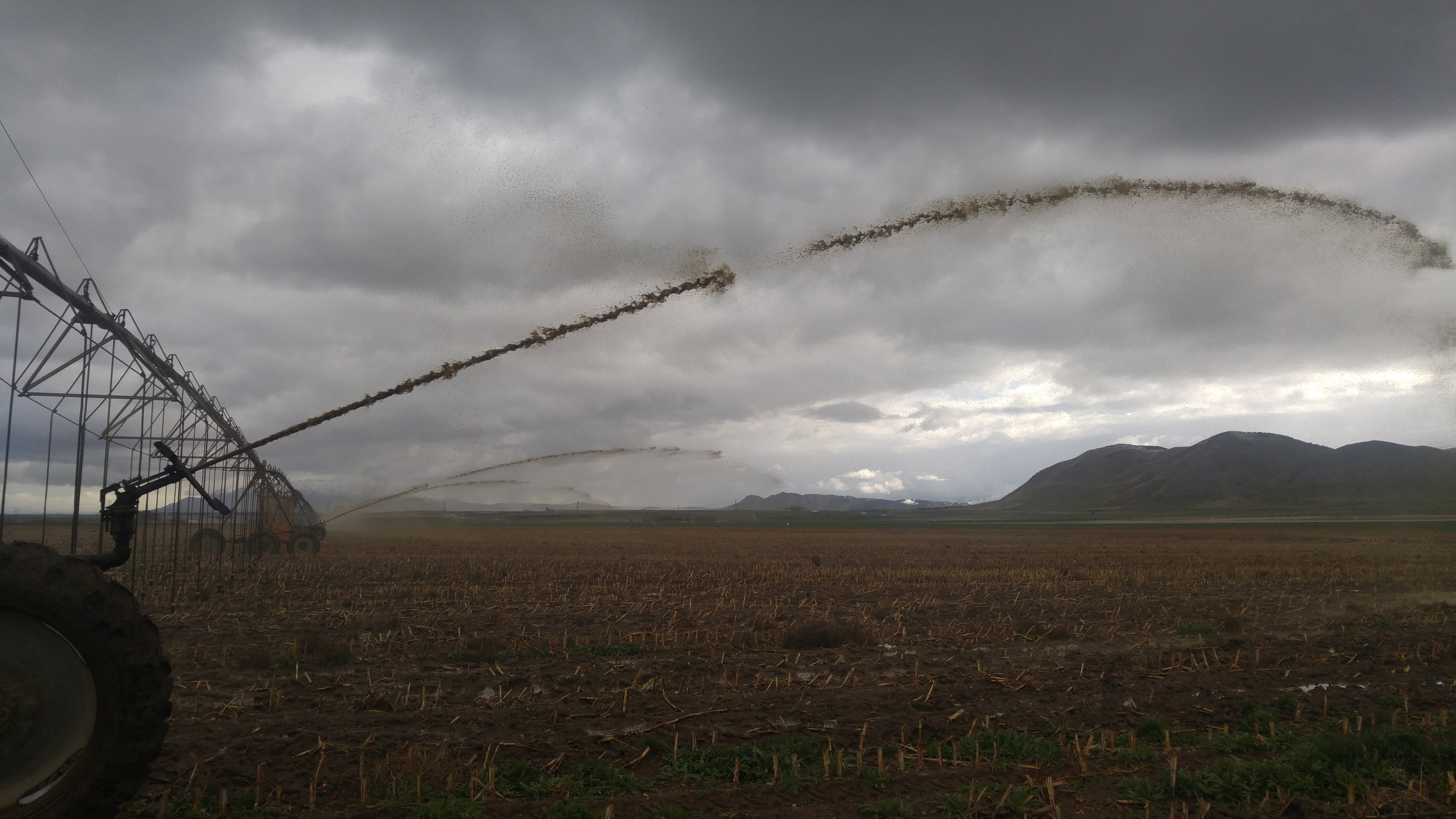
at the base of each pivot tower. Photo credit:
Jonathan Holt.
4. Wheel Lines and Center Pivot System. Where wheel lines and center pivots are in place, they can provide an effective method of manure application. These systems cover large tracts of land. Pivots or laterals are also nearly completely autonomous. Several options exist for manure irrigation through these systems, including:
- Large sprinklers with large nozzles (usually larger than ¼ inch to avoid plugging) attached to the base of each tower for pivots (Figures 2 and 3).
- Separate pivot drop hoses that are only used for manure application, positioned at low elevations to reduce drift and odor (Figure 4).
- Wheel-line or pivot nozzles used for irrigation that can also apply separated liquid manure directly (Figure 5).
Manure Irrigation Components

at the base of pivot towers. Photo credit:
Jonathan Holt.
Irrigation systems used for manure application may utilize plastic, steel, or aluminum pipes. When used aboveground as moveable lines, aluminum pipes are lightweight and durable. They maintain value well but require dedicated labor because they must be moved. Steel pipes, while extremely durable and long-lasting, are costly, and therefore, not often used. PVC pipes are lightweight and easy to transport but must be placed underground to protect against damage. Using polyethylene pipe enables the producer to magnify all the benefits of a plastic pipe while protecting against damage from exposure to environmental factors harmful to PVC (Field et al., n.d.). While manure irrigation can be performed through any of these materials, metal pipes present a greater risk of corrosion if not flushed well. Lining center pivot pipes with polyethylene offers greater protection when irrigating with wastewater. This addition currently costs around $9 per foot and may be well worth the investment if manure irrigation is a common practice (Natural Resources Conservation Service, 2013).
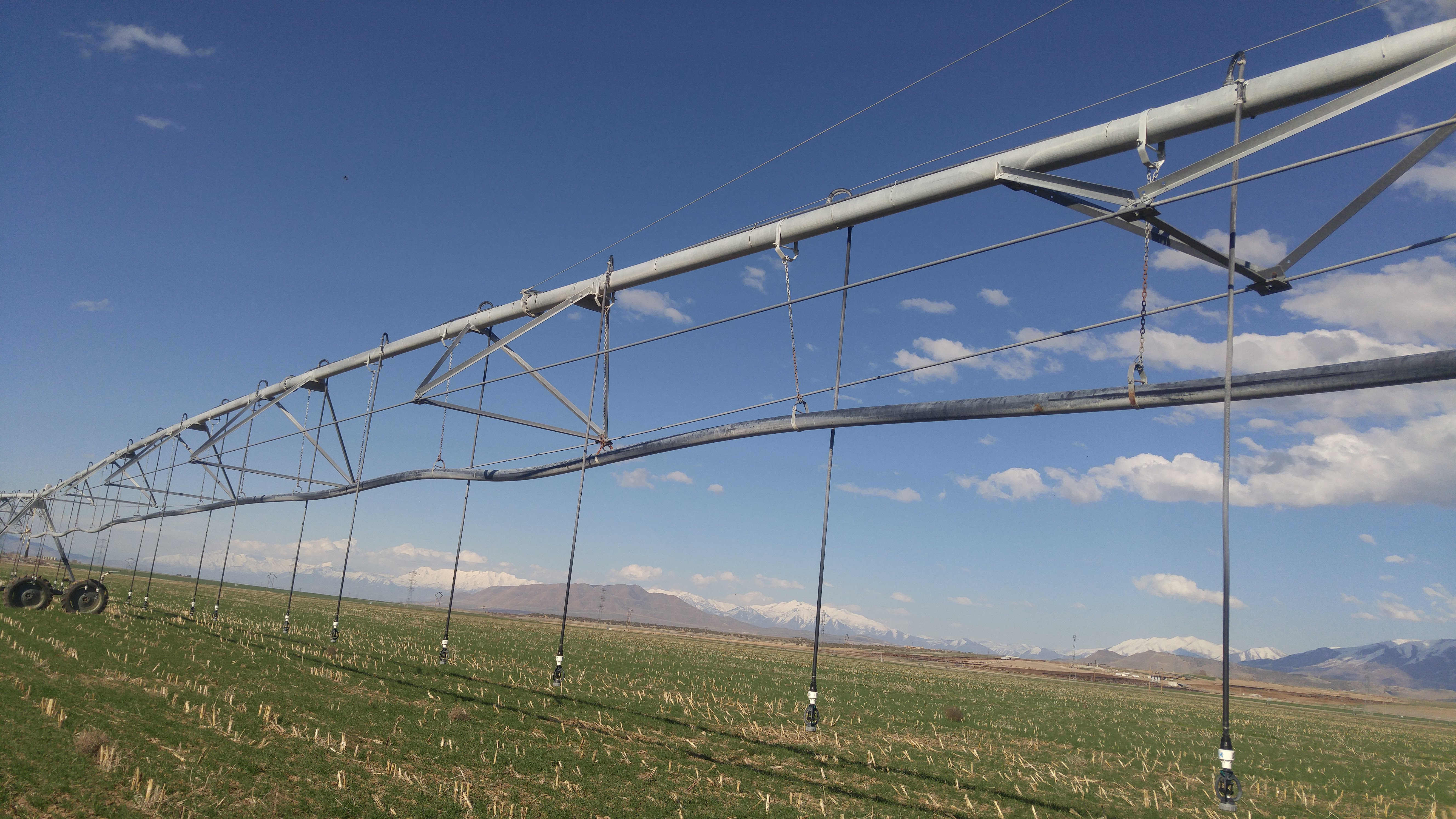
sprinklers for irrigation and manure (black tubing
below main truss rod) on the same pivot.
Photo credit: Matt Yost.
Use of a backflow protection device may be required when irrigating with manure, particularly when irrigation water comes from a potable source (Kranz et al., 2007). These devices allow water to flow through in only one direction so that contaminated water does not return to clean water and potentially contaminate a drinking water source. Not all backflow preventers are of equal utility. Where required, necessary components may be outlined in state statutes to ensure that protection meets a minimum level of efficacy.
Sprinkler pressure may influence nozzle selection. In selecting proper sprinkler pressure, the careful irrigation manager is presented with tradeoffs. Pressures that are too high result in smaller droplets and increased drift. Pressures too low result in clogged nozzles which, in turn, increase pressure (Sheffield, 2001). Calibrate equipment often to achieve the proper balance. It is helpful to match low-pressure sprinklers with nozzles that minimize the potential to trap solids and the buildup of salts. Pads with coarse grooves are not ideal. On center pivots, it can be beneficial to use nozzles with higher flow rates on a few of the drops at the end of the final tower. This helps solids to exit the lateral rather than build up in the pipeline.
Best Practices for Manure Irrigation
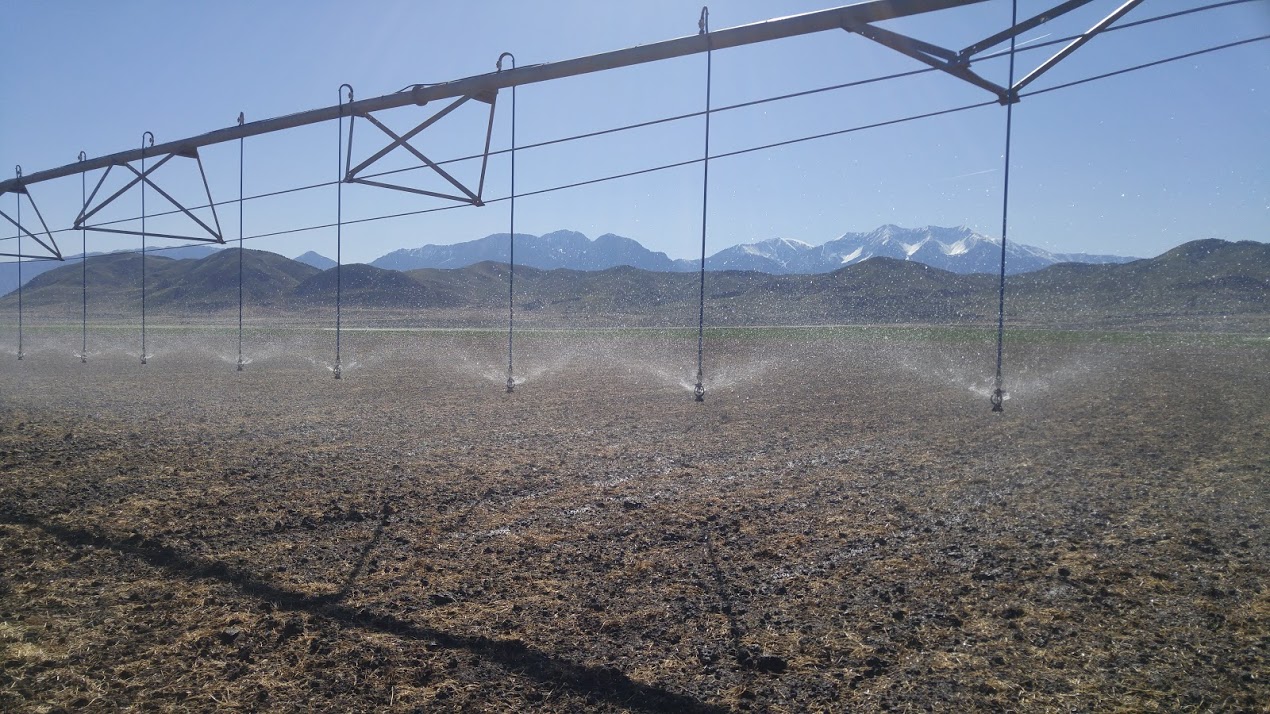
through sprinklers used for irrigation.
Photo credit: Jonathan Holt.
Many best practices for manure irrigation are similar to those for manure land application—including storage, timing, safety, setbacks, nutrient testing and utilization, and odor reduction strategies. One of the largest concerns of manure irrigation is preventing manure from flowing back into a well or contaminating other water. Manure irrigation should be treated the same way as chemigation. In some states, irrigation water must be sampled before manure application through an irrigation system and at least every five years thereafter to verify that manure has not been accidentally drawn into the well. While not required in Utah, this may be a good practice to ensure that proper manure irrigation takes place.
One of the first considerations for manure irrigation is proper manure storage prior to application. Lagoons should have storage capacity for sludge accumulation, manure, wastewater, and runoff that ends up in the lagoon, and any precipitation. Anaerobic lagoons are recommended for storage to help minimize odors. The solids in the liquid manure tend to settle, so the liquid at the top will have the fewest solids, whereas the liquid at the bottom will have the most solids. A lagoon is typically divided into three sections: (1) the accumulated sludge layer at the bottom of the lagoon; (2) the permanent pool in the middle that allows for a bacteria level sufficient to digest the solids and minimize odor; and (3) the distribution volume at the top. When applying effluent from a lagoon, it is important that the pumping stops when one reaches the permanent pool. This ensures that enough bacteria remain to properly treat the new waste being added to the lagoon (Kranz et al., 2007). An agitator is necessary to keep solids in suspension while pumping effluent; although, one can remove just the top 1–2 feet from the lagoon without agitation if needed to maintain storage capacity. Irrigation systems with relatively large sprinklers can handle up to 5% solids, while center pivots typically only handle up to 3% without significant clogging issues (Johnson, 2018). A low-pressure shutoff switch will prevent the irrigation system from continuing to run if the manure pump fails or if the storage pool is run dry.
The timing of manure irrigation applications will be influenced by the growth stage of the crop, crop nutrient needs, and seasonal and environmental factors. A major benefit of manure irrigation is the ability to apply manure when crops most need the nutrients. Rather than overapplying at less optimal times, manure can be applied more frequently in smaller amounts and when crops can readily utilize nutrients, thus reducing nutrient loss and improving nutrient use efficiency (Ohio State University Extension, 2021). Factors outside of crop needs may also influence decisions on the timing of manure applications. For example, when irrigating from an anaerobic lagoon, summer and fall months are recommended for manure applications because these are the times when biological processes control odor the most (Kranz et al., 2007). Thoughtful producers will also note the temperature, wind speed, and wind direction before making application decisions. All these factors may influence odor and particle drift. By adjusting accordingly, producers can avoid negative interactions with neighbors and even potential legal challenges.
Producers should monitor the salt content of manure. Applying manure with high levels of salt can be harmful when it contacts the crop, particularly in the early vegetative stages (Kranz et al., 2007). Further, overapplication can lead to salt buildup in the soil profile. This can negatively impact the soil’s physical properties and hinder the ability of crops to extract water (Pearson, 2003). Nutrient concentrations in the wastewater and the soil also need to be monitored carefully so that phosphorus and other nutrient levels do not become excessive. Also, be sure that all manure irrigation practices comply with nutrient management plans and regulations.
One additional danger that producers must be aware of when applying manure through irrigation systems is the potential for airborne pathogens to cause illness in cattle and humans (Seltenrich, 2017). Using anaerobic digestion helps reduce pathogens present in manure. However, not all pathogens are removed; effectiveness varies by pathogen type. Using setbacks helps ensure that manure irrigation occurs at an acceptable distance from anything that could be harmed, and reduces the pathogen exposure risk. The Quantitative Microbial Risk Assessment (QMRA) method is recommended to determine a safe setback distance. QMRA measures pathogen concentrations in the air to determine exposure and then calculates a probability of illness by utilizing a response model unique to the pathogen of interest. Use this information to assess population risk and determine acceptable setback distances (Borchardt, 2013).
Economics of Manure Application
Considering economics can present a strong argument in favor of using irrigation for manure distribution. The true cost of application varies and is influenced by multiple factors including transportation distance, size of the operation, and the form of manure. Irrigation is typically the most affordable form of application in terms of loading, transporting, and applying. The greatest difference is in the handling costs, primarily due to the time it takes to transport manure to the field. Time costs increase when hauling slurries or liquids. Water in manure reduces the efficiency of nutrient transport and application. Some producers pay for custom manure transportation and application due to time constraints or because the equipment used is highly specialized and costly to own. Utilizing irrigation systems reduces costs because manure can be pumped through pipes or hoses to the application site. Additionally, by having the ability to apply nutrients during the growing season at the time and in the quantity needed, producers may save on fertilizer costs. Economically, it does not make sense to install pivots for manure application unless pivots also pump water for irrigating crops (Massey & Payne, 2019). When evaluating whether manure irrigation would be economical for your operation, be sure to weigh all the costs and savings mentioned above along with any other factors that may differ between land and irrigation application of manure.
Summary
Manure application through pressurized irrigation systems presents several advantages over land application methods; namely, lower costs, reduced compaction, the ability to apply to growing crops, and better application control. Some disadvantages include the potential contamination of surface water and wells, increased plugging and wear in irrigation equipment, and drift of particles and odor. The irrigation system utilized will depend on many factors individual to each operation. Producers should select sprinkler pressures and nozzles that present a low plugging risk while still achieving an acceptable application efficiency. Applying manure through irrigation systems can be highly economical due to reduced transportation and time costs and is an excellent way for growers to get needed nutrients to their crops.
References
- Borchardt, M. (2013, May 17). Understanding manure irrigation [Symposium presentation]. Public Research Symposium, Menasha, WI. University of Wisconsin-Madison, Division of Extension. https://fyi.extension.wisc.edu/manureirrigation/2013-presentations/.
- Field, W. P., Collier, F. W., & Wallington, H. R. (n.d.) Improved on Farm Irrigation Techniques. Food and Agriculture Organization of the United Nations. http://www.fao.org/tempref/agl/AGLW/Morini/04_TEXTONFARM.pdf.
- Jarrett, A. R., & Graves, R. E. (2015). Irrigation of liquid manures. Pennsylvania Nutrient Management Program, Penn State Extension. https://extension.psu.edu/programs/nutrient-management/educational/manure-storage-and-handling/irrigation-of-liquid-manures.
- Johnson, L. (2018, June 20). Is manure irrigation risky business? Institute of Agriculture and Natural Resources, University of Nebraska-Lincoln, Water. https://water.unl.edu/article/animal-manure-management/manure-irrigation-risky-business.
- Kranz, W. L., Koelsch, R. K., & Shapiro, C. A. (2007). Application of Liquid Animal Manure Using Center Pivot Irrigation Systems. University of Nebraska-Lincoln Extension. https://extensionpublications.unl.edu/assets/pdf/ec778.pdf.
- Massey, R. & Payne J. (2019). Costs of liquid manure application and transport. Livestock and Poultry Environmental Learning Community. https://lpelc.org/costs-of-liquid-manure-application-and-transport/.
- Natural Resources Conservation Service. (2013, December 3). Cost Scenarios Irrigation System, Sprinkler (Center Pivot System). U.S. Department of Agriculture. https://efotg.sc.egov.usda.gov/references/public/NM/CostSenarios_442-Irrigation_System,Sprinkler.pdf.
- Ohio State University Extension. (2021). In-Crop application of manure sourced nutrient to maximize crop uptake. The Ohio State University Extension. https://agbmps.osu.edu/bmp/crop-application-manure-sourced-nutrient-maximize-crop-uptake.
- Pearson, K. E. (2003). Basics of salinity and sodicity effects on soil physical properties. MSU Extension Water Quality, Montana State University. https://waterquality.montana.edu/energy/cbm/background/soil-prop.html.
- Pfost, D. L., & Alber, O. (2001). Land application equipment for livestock and poultry manure management. University of Missouri Extension. https://extension.missouri.edu/eq383.
- Seltenrich, N. (2017). Manure irrigation: Environmental benefits, potential human health risks. Environmental Health Perspectives, 125(12). doi:10.1289/EHP2233.
- Sheffield, R. (2001). Land application equipment. Livestock and Poultry Environmental Stewardship curriculum, Midwest Plan Service. Iowa State University. https://lpelc.org/wp-content/uploads/2019/03/LES_36.pdf.
Published June 2021
Utah State University Extension
Peer-reviewed fact sheet
Authors
Jeffrey Austin, Matt Yost, Rhonda Miller, Niel Allen, Ryan Larsen, Earl Creech, and Grant Cardon
Related Research







